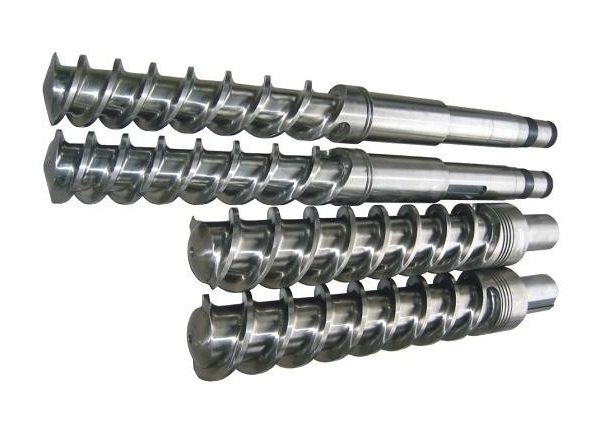+86-0580-8052088
+86-13505800981
No. 20, Liguan Road, Jintang Town, Dinghai District, Zhoushan, Zhejiang, China
The main factors affecting the quality of plasticizatio […]
The main factors affecting the quality of plasticization are: length-diameter ratio, compression ratio, back pressure, screw speed, barrel heating temperature, etc.
1. Length-diameter ratio: the ratio of the effective working length of the screw to the screw diameter.
A. A large aspect ratio makes it easier to eat evenly;
B. Longer screws can be used for plastics with better thermal stability to improve mixing performance without scorching, and plastics with poor thermal stability can be used with shorter screws or no threads at the end of the screw. Considering the characteristics of plastics, the general flow length ratio is as follows: thermosetting is 14\'16, heat sensitivity such as rigid PVC, high-viscosity PU is 17\'18, general plastic is 18\'22, and high temperature stable plastics such as PC and POM are 22\'24.
2. Compression ratio: the ratio of the depth of the last groove in the feed section to the depth of the first groove in the metering section.
A, considering the compressibility of the material, the degree of filling, and the effects of backflow, the product should be dense, heat transfer and exhaust;

b. Appropriate compression ratio can increase the density of plastics, make molecules and molecules more tightly bound, help reduce air absorption, reduce temperature rise due to pressure, and affect the difference in output, improper compression Than will destroy the physical properties of plastic;
C. The higher the compression ratio, the higher the temperature rise of the plastic during the plasticization process in the material tube, the better the mixing uniformity of the plastic during the plasticization, and the relative output is greatly reduced.
D. High compression ratio is suitable for non-meltable plastics, especially plastics with low melting viscosity and thermal stability; low compression ratio is suitable for fusible plastics, especially high melting viscosity, heat-sensitive plastics.
3, electric heating temperature setting
A. Melt the chilled plastic retained in the barrel and screw to facilitate the rotation of the screw and provide a part of the heat required for the melting of the plastic;
B. Set 5\'10℃ lower than melt temperature (partly provided by frictional heat);
C. The adjustment of nozzle temperature can also be used to control drooling, condensate (plug nozzle), wire drawing, etc.;
D. General temperature control for crystalline plastics.
Copyright:Zhoushan Tianxiang Screw Factory
China Conical Twin Screws ManufacturersTechnical Support: HWAQ